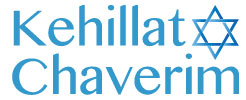Vayakhel-Pikudei 5778: We Can Do it Together
Today I will speak to you about the dual Parshaot: Vayakhel – Pikudei. Both relate to the building of the Mishkan and the collection of materials for its construction.
You will please recall that when the Jewish people left Egypt, they took with them great wealth bestowed upon them by the Egyptians. Not everyone, however, left with the same amount of wealth. What they got is what they had. In the Jewish camp you could hear the following: “Isn’t it amazing how the Egyptians have done such an about face? Previously they enslaved us and paid us nothing for our hard work. Now they shower us with gifts. Guess the Egyptians must actually have a conscience”. Meanwhile, in the Egyptian camp, you could hear the following:” Geh avek! “For those of you not fluent in ancient Egyptian, geh avek roughly translates as “Get out of here you lousy Jews and take your plagues with you!”
Fast forward to the wilderness, Moses gathers the Jewish people and informs them that today they would learn a new concept – Tzedakah. G-d has commanded that a Mishkan be built where His Holy Presence could reside. Wait a minute! Didn’t the Jews already give Tzedakah when a half-shekel was collected? Not really! The half-shekel was a tax used as a means to take a census. Then, one half- shekel and only one half-shekel could be given. Now, people could give as much as they wanted.
Moses explained that he needed to collect gold, silver, copper, wool, linen, animal skins, wood, herbs, oil and precious stones to construct the Mishkan. Part with some of your wealth, he advised, according to what you believe to be appropriate in light of your wealth.
The Jewish people were so generous with their contributions that Moses eventually had to tell them “enough”. What initially seemed to be an insurmountable undertaking now became a reality. G-d could now occupy the Mishkan. His Presence could be observed by a Pillar of Cloud which accompanied the Jewish people by day and covered the Mishkan and by a Pillar of Fire at night. The sin of the Golden Calf had finally been atoned.
What can be learned from these Parshaot? First, we can deduce that charity should come from the heart. It should be given freely and without reservation. Next, we should come to a realization that even the most seemingly insurmountable tasks can be accomplished when a group of people work together. Don’t run away from challenges. Embrace them. Last, we should recognize that our ancestors were one heck of a great group of people.
In conclusion, Moses also reminded the Jewish people that they must observe the Sabbath. This, of course, gives me a golden opportunity to end my D’var by wishing all of you a good Shabbos!

